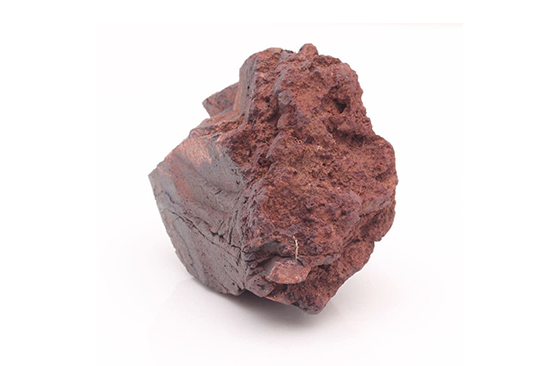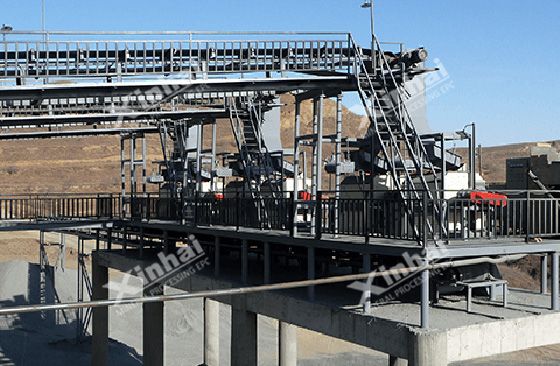
Micro-grained hematite mineral faces significant recovery problems during the beneficiation process due to its small particles and weak magnetism. Traditional high-gradient magnetic separation equipment is difficult to deal with fine particles, resulting in the lower recovery limit being usually around 0.019mm, sometimes even as high as 0.037mm, making it impossible to effectively recover finer minerals. In order to improve the recovery rate, the industry uses a strong magnetic separation-anion reverse flotation process. Although it has achieved remarkable results in improving the quality of iron concentrate, it still needs further optimization to deal with the complexity of fine-grained hematite mineral. This article explores these challenges and possible solutions.
During the magnetic separation process of fine-grained hematite, its surface characteristics significantly increase the difficulty of recovery. Due to the small size and weak magnetism of hematite mineral particles, traditional magnetic separation processes cannot effectively capture these fine-grained minerals. This problem is particularly prominent in the strong magnetic separation-flotation combined process. The lower limit of particle size recovery in strong magnetic separation operations is usually around 0.019mm, which has become the main bottleneck restricting the efficient recovery of fine-grained hematite ore.

Although the flotation process can further reduce the lower limit of particle size recovery and can process minerals with a particle size as small as 0.010 mm, directly flotating the raw ore without pre-enrichment often brings a series of problems. Due to the large specific surface area of fine-grained minerals, the contact area with the reagents increases, resulting in a significant increase in reagent consumption and a corresponding increase in production costs. In addition, the viscosity and complexity of the slurry during the flotation process also increase, which not only reduces the sorting effect, but also makes it difficult to reflect economic benefits. Therefore, how to improve the recovery rate of fine-grained hematite mineral while reducing reagent consumption and controlling costs has become one of the key issues that need to be solved in current mineral processing technology.
The strong magnetic separation-anion reverse flotation process shows many advantages in processing fine-grained hematite, which significantly improves the quality of the iron concentrate and overcomes the problem of some fine-grained hematite mineral while ensuring the recovery rate. Iron ore recycling problems. Its specific advantages include:

1. Improve the quality of iron concentrate: Through strong magnetic separation, impurities in hematite are effectively removed, greatly improving the purity and quality of iron concentrate.
2. Enrich ore and improve efficiency: The strong magnetic separation process achieves preliminary enrichment of ore before flotation, significantly improves the efficiency of subsequent flotation, and makes the flotation process more concentrated and effective.
3. Remarkable desliming effect: The strong magnetic separation process not only enriches useful minerals, but also has a good desliming effect, reducing the impact of mud during the flotation process, thus improving the quality of the flotation concentrate.
4. Reduce production costs: By strengthening the magnetic separation operation before flotation, the amount of flotation reagents is reduced, production costs are reduced, and the overall economic benefits are improved.
However, despite the excellent performance of this process in many aspects, the lower limit of particle size recovery of current strong magnetic separation equipment is still mainly concentrated around 0.019mm. This means that for finer particles, existing technology is still difficult to achieve efficient recovery, and this is still an area that requires further optimization and improvement.

1. Improve high-gradient magnetic separation equipment: In order to better process fine-grained hematite, it is necessary to develop or improve high-gradient magnetic separation equipment that can handle finer particles, reduce the occurrence of blockage, and improve the collection capacity of fine-grained minerals.
2. Optimize flotation reagent formulation and process: Through research and development of flotation reagents suitable for fine-grained hematite, combined with precise process control, further reduce the consumption of reagents in the flotation process and improve economic benefits.
3. Combine multiple mineral processing processes: In actual production, combine multiple mineral processing processes such as strong magnetic separation, flotation, and gravity separation to form a complementary mechanism, so as to more effectively recover fine-grained hematite.

To improve the magnetic separation recovery rate of fine-grained hematite, it is necessary to start from equipment improvement, process optimization, and multi-process combination. Only through technological innovation and continuous experimentation can a better balance between recovery rate and economic benefits be achieved, providing strong support for the efficient utilization of iron ore resources.
To find out more about our products and solutions, please fill out the form below and one of our experts will get back to you shortly.